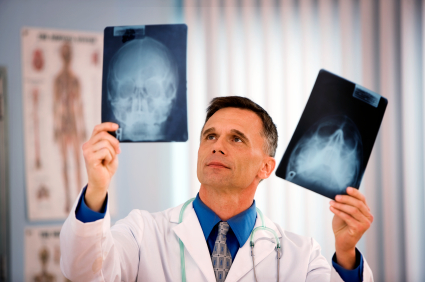 After an on-field or sideline evaluation, a player should not be left alone, with serial monitoring for deterioration essential over the initial few hours following injury. A follow-up evaluation of an athlete with a suspected concussion should then be performed in a hospital emergency room or doctor's office.
After an on-field or sideline evaluation, a player should not be left alone, with serial monitoring for deterioration essential over the initial few hours following injury. A follow-up evaluation of an athlete with a suspected concussion should then be performed in a hospital emergency room or doctor's office.
According to the most recent international consensus statement on sports concussion, including the Sport Concussion Assessment Tool 2 (SCAT2), the key features of a follow-up exam after a suspected concussion include:
- A medical assessment, including a comprehensive history and detailed neurologic examination with a thorough assessment of mental status, cognitive function (attention and memory), gait and balance;
- A determination of the clinical status of the patient, including whether there has been improvement or deterioration since the time of injury. This may involve seeking additional information from parents, coaches, teammates and eyewitnesses to the injury.
- Deciding whether neuroimaging (brain CT or, where available, MR brain scan) should be conducted on an urgent basis to exclude a more severe brain injury involving a structural abnormality. Examples of where such neuroimaging may be called for include:
- Speech or language difficulties such as aphasia or dysarthria (impaired speech and language skills), poor enunciation, poor understanding of speech, impaired writing, impaired ability to read or to understand writing, inability to name objects (anomia)
- Vision changes such as reduced vision, decreased visual field, sudden vision loss, double vision (diplopia)
- Neglect or inattention to the surroundings on one side of the body
- Loss of coordination, or loss of fine motor control (ability to perform complex movements)
- One-sided eyelid drooping, lack of sweating on one side of the face, and sinking of one eye into the socket
- Poor gag reflex, swallowing difficulty, and frequent choking.
Parents need to know, however, that conventional structural neuroimaging (brain CT or where available MR brain scan) are normal in concussive injury and thus contribute little to concussion evaluation, but should be employed whenever a more serious, potentially life-threatening brain injury is suspected.
1. Concussion Statement on Concussion in Sport: the 3rd International Conference on Concussion in Sport held in Zurich, November 2008, P. McCrory et. al, Br. J. Sports Med. 2009; 43; i76-i84.C
2. Sport Concussion Assessment Tool 2 (SCAT2), Br. J. Sports Med. 2009; 43; i85-i88.








